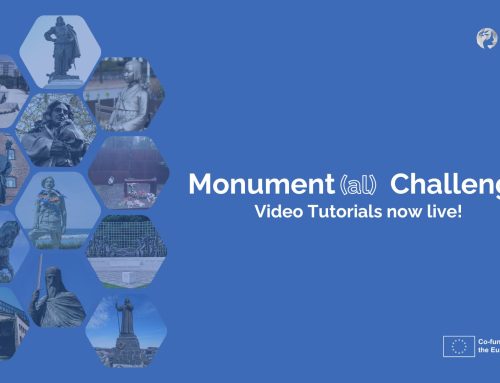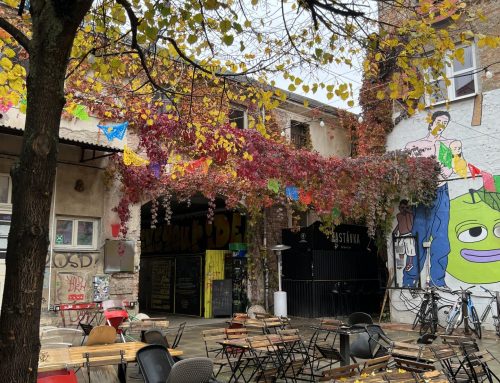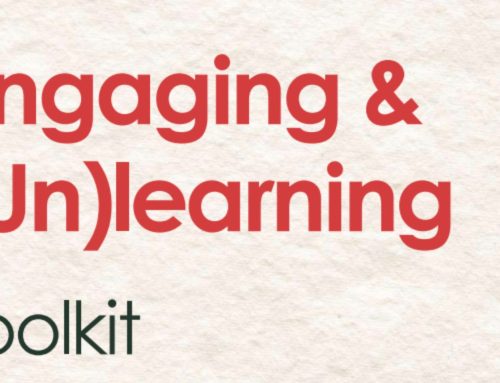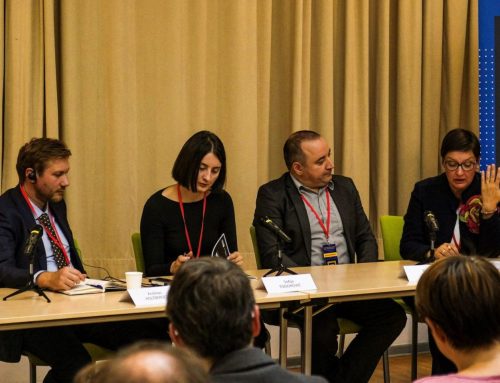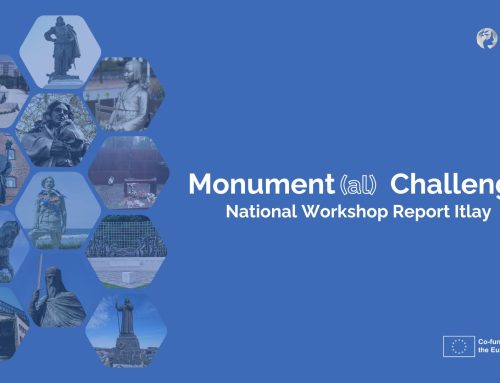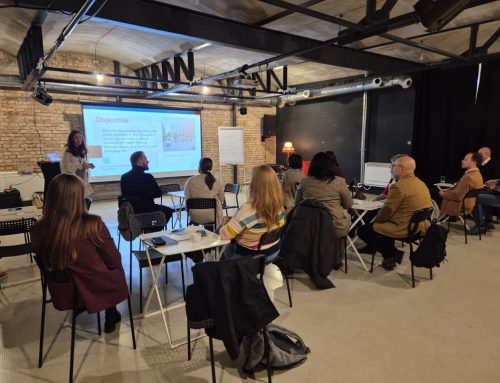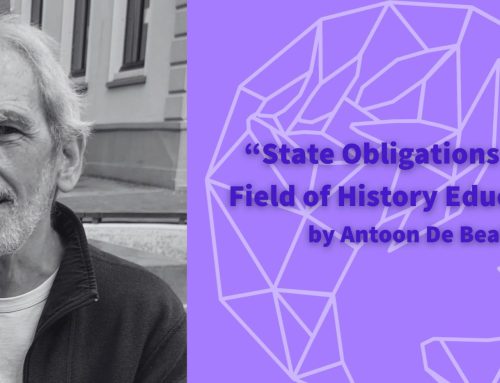How can we teach students to create a defensible thesis?
On April 21st, Dr. James Diskant, a member of EuroClio’s History and Learning Team, a historian of modern German history and a retired world history teacher with an emphasis on the 19th century, continued our Historiana Webinar Series. The series is an occasion to explore the platform’s teaching and learning tools and to debate critical thinking skills. By using Historiana’s e-builder, he was able to show how different tools have different aims, and how their use can shape students’ thinking patterns and thus lead to different outcomes.
Historiana is an online portal developed by EuroClio, Webtic and UseMedia with Europeana for and with history and citizenship educators from Europe and beyond. On Historiana you can find ready to use learning activities, multiperspective historical content and digital tools that are all free to use, adapt and share.
What does it mean to create a valid historical argument?
Dr. James Diskant started off by showing a painting without revealing any additional information. He asked the audience to consider the following questions: “What do you see? What do you think that it is? What does it show about the 19th century?”
The painting, called “The Gleaners”, was painted by Jean-François Millet 1857 shows three French peasant women collecting left-over crops from a farmer’s field after the harvest has been collected. In many European countries, the rural poor had the right to glean the fields to supplement their diet; this painting illustrates in part how peasants lived in a world of scarcity during the early Industrial Revolution. While this painting is an important source that represents a specific moment of history, taking into account different sources allows us to define different historical narratives. It helps us create defensible historical arguments based on different kinds of evidence.
Before diving into Historiana’s platform and the advantages of its eActivity Builder, he defined what we mean by making a historical argument:
“Creating and supporting a historical argument involves your ability to create an argument and support it using relevant historical evidence. This includes identifying and framing a question about the past and then coming up with a claim or argument about that question, usually in the form of a thesis. A good argument requires a defensible thesis, supported by thorough analysis of pertinent and varied historical evidence.”
AP World History
He also shared step by step indications on how to approach a source:
- Closely examine the source
- Take notes on details – what we think it is (words, images, and/or ideas)
- Analyze the details and find patterns that emerge
- Analyze the patterns and establish what the patterns reveal
- Formulate an argument about it based on a pattern analysis
How can Historiana’s eActivity Builder help students create a defensible thesis?
Dr. James Diskant argued that in order to create a defensible argument, it is best to choose carefully one’s sources. He selected fourteen images from Historiana’s Source Collection on Visual Representations of Women to provide different insights into women working in the 19th century. He then threw down a challenge to the audience: participants, who were sent into various breakout rooms, were given different images and were asked to reflect on the meaning they conveyed and on their relationships with one another. More specifically, he asked them to reflect on which Historiana’s tools of the eActivity Builder worked best to highlight the relationship between them.
Interactive tools for critical thinking
The eActivity Builder offers many different tools. All these tools have been created with historical critical thinking in mind and serve different purposes; each tool is thoroughly explained here. Among others, he decided to focus on four tools in particular, as using these specific tools can help students create a defensible argument.
- The Analyzing tool was created to analyse one source in detail, using annotation. You can use it to have students suggest the time period at which the source was created, practise really close observation, or make connections between parts of a source and knowledge.
- The Compare & Contrast tool has the aim of comparing different sources. It works the same as the analyzing tool, but for two or more sources. You can use it to have your students think about similarities and differences between visual sources from the same time period, or identify change/continuity when they belong to different time periods.
- The Sorting tool allows students to categorise sources according to the criteria set by the teacher. You, as the teacher, can decide where to initially place the images and ask the students to arrange them in the way you want to. One can sort chronologically, by theme, or into smaller groups. After adding sources to the tool, you can also set a background: different backgrounds have different aims, for example one can divide sources into categories (positive or negative, thematic headings, relevance to a topic, timeline, and/or sequence of events). This tool allows you as a teacher to create a variety of ways to have your students work, as there are so many ways to organize the activity! In some ways this tool then works the best to emphasize higher level thinking.
- The Discovering tool allows you to look at different relationships between various images and see the connections and in this way, it allows students to develop their level of thinking. The Discovery Tool is inspired by a mind map, but the idea is that students can discover the connections between different sources. They can reveal the sources one by one, and then see the word that connects them. It was specifically created for students to learn more about sources and the principle of causation because they can discover sources in an order defined by the teachers by simply clicking on the sources.
“Allowing different tools you could have in the block, you could allow students to look at things in different ways.”
In the activity that he created with the eLearning Activity Builder, he asked students: “In what ways did Industrialization change work for women?”. By analyzing 14 images from 19th-century European countries, students can create a defensible historical argument about change and continuity as a result of the First Industrial Revolution. By using the tools differently, you could do sorting activities in various ways! In this specific case about women working in the 19th century, it can help make clearer to students the changes related to industrialization, working conditions, and gender roles.
“The evidence used should be built around the application of one of the other historical thinking skills like comparison, causation, patterns of continuity and change over time, or periodization. Finally, it involves your ability to look at a variety of evidence in concert with each other, identifying contradictions and other relationships among sources to develop and support your argument.”
AP World History
Using the eLearning Activity Builder allows you as a teacher to decide how you want to create and organize the entire activity, including the order of images. Historiana’s platform provides reliable (copyright-free!) sources so that evidence can back up student’s arguments and the interactive tools promote their critical thinking, highlighting the connections between the images. In this way, it fosters students’ capability to analyze sources, make historical connections, apply chronological reasoning, and ultimately to create and support a historical argument.
Learn more about Historiana Webinar Series
This article is part of a webinar series, in which teacher educators who are experienced in using Historiana show examples of the eLearning Activities that they created, while also diving into a specific topic and discussing a critical thinking skill to teach students.
On December 9th, EuroClio ambassador Helen Snelson kicked off the webinar series talking about using sources as evidence. She illustrated the eActivity on post-war Europe that she was able to create on Historiana. >> Watch the full event | Read the article to know more.
On February 17th Bridget Martin, History Teacher at the International School of Paris, focussed on contributions to WWI and showed the purposeful eActivity she was able to create by using Historiana’s e-builder. >> Watch the full event | Read the article to know more.
If you’re not familiar with the platform, we recommend you to watch this helpful video as an Introduction to Historiana’s eActivity Builder. You can also just try out the platform yourself – you’ll see that it is very intuitive and offers you plenty of interesting options.
What’s next?
Don’t miss the last webinar of the series! On June 16th, Gijs van Gaans (Teacher Trainer, Fontys Tilburg) will be examining Schisms within Christianity and discuss change and continuity: register here!
This article is written as part of the Europeana DSI4 project co-financed by the Connecting Europe Facility of the European Union. The sole responsibility of this publication lies with the author. The European Union is not responsible for any use that may be made of the information contained therein.
Written by Giulia Verdini
Sources
Main image – Source: Gleaners by Jean-François Millet 1857. Musee D’Orsay, Public Domain.
The Albert Team, “The 5 Most Important Historical Thinking Skills for the AP World History Test”. In AP World History, 2020. Link: https://www.albert.io/blog/5-most-important-historical-thinking-skills-for-the-ap-world-history-test/


